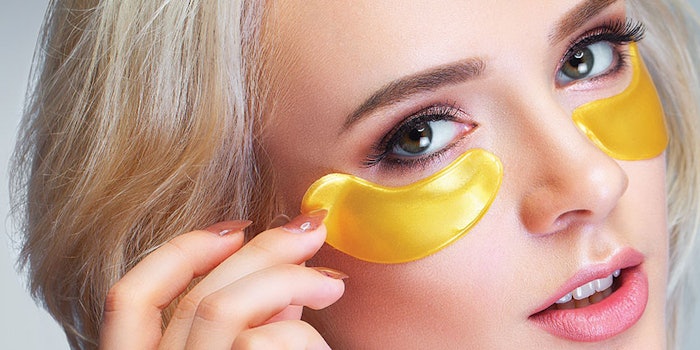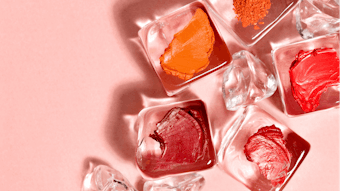
The under-eye area represents one of the most delicate areas of the face. With thin skin, this body site is prone to lines and wrinkles, dark circles, pigmentation and, last but not least, eye bags and swelling. A number of factors contribute to the periorbital area being a top cosmetic concern for many, including: genetics, lack of or low-quality sleep, lifestyle choices and stress.
Since facial aging is person-specific, there is considerable variability in how different areas of an individual’s face are perceived. Moreover, different areas of the face age at different rates, and our perception of age-related changes can impact a person’s perceived age, attractiveness and tiredness; especially considering we look people in the eyes to establish a connection.
Research has proven that in the frontal view, the middle third of the face, as well as the deterioration of the areas around the eyes, e.g., upper eyelid ptosis, loss of malar volume and lower lid fat herniation, play an important role in the negative perception of aging.1
Diurnal Variation of the Skin
A clinical study in the changes of facial signs experienced by French Caucasian women after a working day provided a deeper understanding of this issue.
Standardized full-face photos of two different age groups of women (55-65 and 25-35 years old), taken before and after a working day, were assessed by experts and naive observers. Experts scored facial signs in comparison to scientifically validated scales and benchmarks. Then, a panel of naive female observers assessed the overall look—i.e., more or less tired, aged or dull—from paired (morning/evening) photos. Participants themselves provided a subjective evaluation by filling in a questionnaire about their perceived state of tiredness before and after a normal working day.
Results showed that all participants felt a little more tired in the evening, although, to the surprise of the researchers, a little less so in the older group (55-65 years old) compared with their younger counterparts (25-35 years old). Overall, both groups were judged to be “more tired” in the evening. The researchers stated that in the older group, eye bags improved in the evening compared to morning, whereas glabellar (frown) wrinkles were found slightly accentuated in the evening.2
New launches must understand circadian rhythms, quality of the epidermis, relevance of methods for claims substantiation and novel delivery systems applicable to this precious facial area.
This diurnal variation, i.e., fluctuation that occurs throughout the day, has been demonstrated before. The eye zone is impacted by the effect of gravity on dermal fluids. Japanese research has shown that skin thickness and elasticity changes from morning to afternoon, since swelling tends to occur in the morning due to the effects of gravity during sleep. The repeated movements of the face in facial expressions may gradually increase wrinkle formation and depth from the morning to the afternoon.3 However, gravity and movement are likely to reduce swelling in the face during the day.
Claim Substantiation: Noninvasive Techniques
As shown with facial mapping, there are site-dependent differences in the barrier of each facial zone. The stratum corneum is thinner on the face, being composed of smaller layers of corneocytes than in the SC of body skin. It provides a hydrated skin surface but relatively inadequate barrier function.
Understanding these delicate differences is essential for skin care tailored to specific facial areas. The eyelid skin is distinct from others in that it is associated with low skin surface lipids and a thin stratum corneum cell layer. Additionally, it is composed of large corneocytes that bring about a high surface hydration state, but poor barrier function.
Consideration of different biophysical, non-invasive measurement techniques to substantiate product claims in the periorbital area, along with careful interpretation of the data, is due.4
Optical techniques assessing changes in skin relief, and methods investigating changes in hydration and anisotropy, are not interchangeable and must be assessed separately. For example, in a recent clinical study of older female volunteers, skin surface parameters showed both improvement and worsening when measurements were taken before and after 30 daily applications of a hyaluronic acid-based skin care product to the periorbital area.5
New Delivery Systems
Formulas are getting more sophisticated, and a range of delivery systems has been developed for actives in the under-eye area. Take patches, for example; these are perhaps some of the most successful treatments. Antioxidant-based gels are also effective for day-to-day application to alleviate swelling.
In relation, a novel lipid-based particulate system named cubosomes have been reported to deliver alpha lipoic acid (ALA) in a poloxamer 407 (P407) gel. The P407 gel loaded with ALA cubosomes was shown to provide a significantly lower release rate and proved efficacious in a double-blind, placebo-controlled clinical study. Results indicated a reduction and almost complete resolution of fine lines in the periorbital region, along with an overall improvement in skin color and texture in most volunteers. There were also no instances of irritation, peeling or other apparent adverse side effects.6
Conclusions
The adoption of a gentle, slow-release approach to facilitate hydration, anti-inflammatory activity and barrier function support in this specific part of the face is important. New launches must also understand circadian rhythms, quality of the epidermis, relevance of methods for claims substantiation, and novel delivery systems applicable to this precious facial area.
References
All websites accessed on Aug. 29, 2018.
- ncbi.nlm.nih.gov/pubmed/26408388
- ncbi.nlm.nih.gov/pubmed/28295411
- ncbi.nlm.nih.gov/pubmed/15322833
- ncbi.nlm.nih.gov/pubmed/19099543
- ncbi.nlm.nih.gov/pubmed/28614949
- ncbi.nlm.nih.gov/pubmed/24056055










